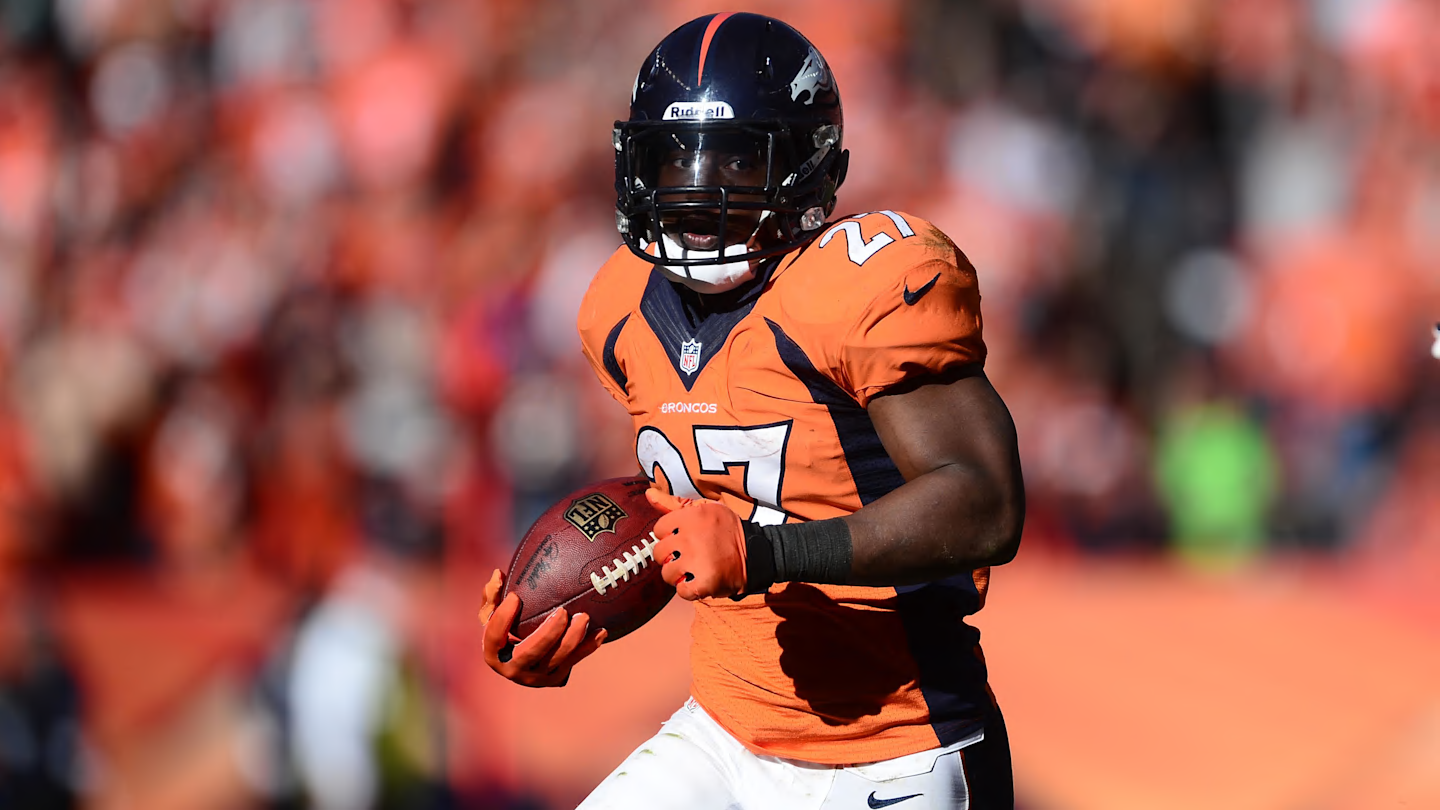The Denver Broncos filled most of the holes in their departure alignment, thanks to the free agency. However, A notable hole is behind.
The fact that broncos currently have mainly a depth or rotation ball carriers on the list can convince some fans to believe that a ball carrier must be drafted in the first round. After all, these are the most pressing needs of the Broncos.
However, there are those who stressed that the writing of a ball carrier in the first round is not necessarily the best strategy. There is a case to do for a position value, but it is also worth asking how broncos have obtained in return from the old half-dos written in the first round.
I returned to look at the history of broncos draft to compare the running backs which were drafted in the first round on the most productive backs of the team.
First of all, we should note that a broncos ball carrier drafted in the first round is at the temple of renowned professional football: Floyd Little. However, few was written before the AFL-NFL merger which consolidated the two leagues in one.
In addition, Little was the first player to sign with the Broncos after writing it in the first round. Before the merger, he was not unusual for an NFL and an AFL team to write a player, then the player would opt to sign with the NFL team.
Post-merger, the Broncos only wrote five half-courses in the first round: Bobby Anderson in 1970, Otis Armstrong in 1973, Gerald Willhite in 1982, Steve Sewell in 1985, and Knowshon Moreno in 2009. This is free from Bobby Humphrey, which was a first round in the 1989 additional project.
Anderson played four seasons with broncos. He had 1,281 yards in 313 races with nine affected and captured 84 passes for 861 and two affected. Anderson was also a kicking turner.
Armstrong spent eight seasons with broncos, rushing for 4,453 yards on 1,023 races with 25 touchdown and caught 131 passes for 1,302 yards and seven affected. Like Anderson, Armstrong was also a kicking turner and was a key player in the 1977 Broncos Super Bowl team.
Willhite spent seven seasons with broncos, rushing for 1,688 yards in 380 races and caught 207 passes for 1,767 yards and five affected. He was often twinned with the choice of fifth round in 1982, Sammy Winder, who outperformed Willhite, rushing for 5,427 yards on 1,485 races with 39 affected and captured 197 assists for 1,302 yards with nine new seasons with broncos.
Sewell spent seven seasons with broncos, rushing for 917 yards in 229 races with 13 touchdown and catching 187 assists for 2,354 yards with 13 touchdown. It was a good pass file but was not used much in the racing game, although it appeared in three Super Bowls.
Moreno spent five seasons with the broncos and rushed on 3,616 yards out of 876 races with 27 affected and caught 158 passes for 1409 yards and nine affected. His best season was 2013, in which he rushed to 1,038 yards with 10 touchdown, helping the team reach the Super Bowl XLVIII.
There is no doubt that little was a really great player, but among the other half-round half-cores, Armstrong was the only one to have had a clear impact during several seasons. Moreno had a big season but was at best on average; Sewell was more used as a pass sensor but little as a runner; Willhite was outperformed by a choice of fifth round, and Anderson had no impact.
And then there is the fact that the best broncos ball carrier of all time, Terrell Davis, was a sixth round choice in 1996. If you look at the first five broncos back of all time, Little and Armstrong are there, but the choice of Winker and 2000 Mike Anderson.
Now that does not mean that broncos must wait for the sixth round to write a ball carrier. And, yes, it is a small sample size with regard to runners, the broncos drafted in the first round, but the history of the team with half-door reminds us that it is not necessary to resume day 1.
The best broncos strategy should be to identify the backs in the project they love, and if there is one that they really like, consider taking it in the first round. But if they don’t really like a back or they see several backs that are similar but believe that many of them will be available in subsequent rounds, it is better to wait.
And the best reason to wait is that it is a deep class of running back this year. There is a good chance that broncos can find a productive player on day 2 that will be suitable for the offensive.
It is easy to look at other teams who have backs that were old first round choices that have been productive. But the best thing that broncos can do is look at their own offense, look at the backs that correspond well to the offensive, then determine when targeting such a back, unless there is the one that the team simply cannot let go to n ° 20 in total.
Join the most passionate fans base of Denver Broncos-Land by connecting with Denver Broncos on Si / Mile High Huddle Instagram,, XAnd FacebookAnd subscribe on youtube For daily podcasts live!

